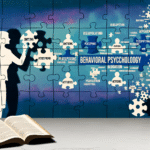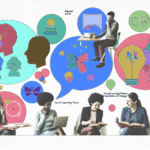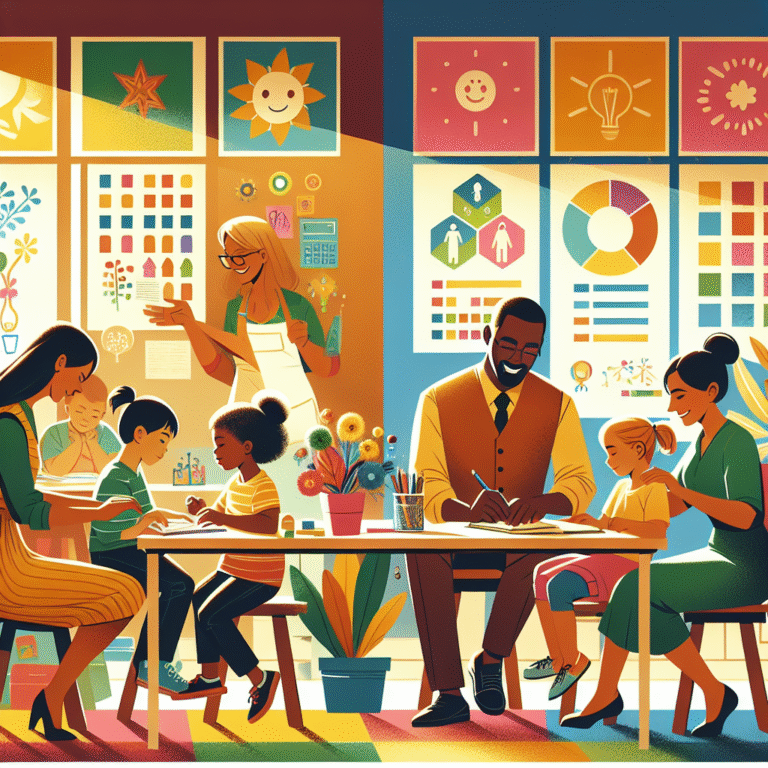
Introduction
In today’s rapidly evolving educational landscape, the focus on academics is paramount, yet an equally crucial aspect often falls to the wayside: the social and emotional needs of gifted students. These extraordinary young minds are not just defined by their intellectual capabilities; they possess a complex emotional landscape that requires attention and nurturing. Understanding and addressing these needs is essential for fostering well-rounded individuals who can thrive both inside and outside the classroom. This article, "Beyond the Classroom: Supporting Social and Emotional Needs of Gifted Students," will delve into the importance of recognizing these needs, utilizing innovative approaches, and implementing effective strategies for support.
Understanding the Unique Needs of Gifted Students
The Profile of a Gifted Student
Gifted students often exhibit traits that set them apart:
- Advanced cognitive abilities: These students understand complex concepts much quicker than their peers.
- High levels of curiosity: They exhibit a thirst for knowledge that drives them to explore beyond standard curricula.
- Sensitivity and intensity: Emotionally, gifted students may feel deeper than their counterparts, leading to heightened responses to stress and social situations.
The Social and Emotional Landscape
Gifted students may experience a variety of social and emotional challenges, including:
- Isolation: Due to differences in interests and intellectual levels, gifted students often feel alienated from their peers.
- Pressure to perform: The expectation to excel can lead to anxiety, burnout, and fear of failure.
- Interpersonal difficulties: Conflicts may arise in relationships due to their keen insight and intense emotions.
Understanding this profile is critical for educators, parents, and peers alike. By recognizing these challenges, we can better support gifted students in their journey to self-discovery and emotional well-being.
Case Study: The Impact of Peer Connection
Background
In a suburban elementary school, a group of gifted students formed a specialized talent group for budding scientists. Initially, they worked in isolation, each focusing on individual projects. However, feelings of loneliness and competition began to surface.
Implementation
Teachers then organized collaborative workshops where students worked together on group projects. The curriculum was adapted to focus on teamwork and communication skills alongside scientific inquiry.
Analysis
Through these social interactions, students reported feeling more connected and supported. The sense of belonging fostered their emotional health, reducing feelings of isolation and competition.
Strategies to Support Social and Emotional Needs
1. Creating Safe Spaces for Expression
Encouraging open dialogue in comfortable settings allows gifted students to express their feelings without judgment.
Example Activities:
- Journaling: Prompts focused on emotions or challenges they face in school can provide an outlet.
- Group discussions: Facilitating structured conversations can help students articulate their feelings.
2. Promoting Collaboration Over Competition
Team-oriented projects that emphasize collaboration reinforce positive peer interactions.
Benefits:
- Reduces individual pressure and anxiety associated with competition.
- Fosters mutual respect and appreciation for diverse talents.
3. Social-Emotional Learning Programs
Implementing SEL programs tailored for gifted students can help them develop crucial life skills.
Components of Effective Programs:
- Self-awareness workshops: Identifying and managing emotions.
- Relationship-building exercises: Work on communication and conflict resolution skills.
Case Study: The Role of SEL in a High School Environment
Background
In a progressive high school, educators noticed a significant number of gifted students struggling with anxiety and social connections.
Implementation
The school introduced a social-emotional learning (SEL) curriculum aimed specifically at gifted students. This included peer mentoring and emotional intelligence workshops.
Analysis
After a year of implementation, students reported decreases in anxiety and improved friendships. The structured environment allowed students to practice social skills while engaging emotionally.
Importance of Community and Parental Involvement
Building Partnerships
Engaging parents and the community in supporting gifted students creates a holistic support system.
Suggested Approaches:
- Parent workshops: Educating parents on understanding their child’s unique needs.
- Community programs: Collaborating with local organizations to offer workshops and activities focused on emotional health.
Chart: The Benefits of Supporting Gifted Students
| Support Strategy | Benefits |
|---|---|
| Safe Spaces | Emotional expression and release |
| Collaboration over Competition | Stronger peer relationships |
| Social-Emotional Learning Programs | Enhanced coping skills |
Summary of Key Insights
In our exploration of "Beyond the Classroom: Supporting Social and Emotional Needs of Gifted Students," we highlighted the unique emotional landscape that these students navigate daily. By creating safe spaces for expression, promoting collaboration over competition, and leveraging SEL frameworks, educators and communities can foster the social and emotional growth of gifted students.
Conclusion
Addressing the social and emotional needs of gifted students is not an option but a necessity for their holistic development. By recognizing their unique qualities and implementing supportive strategies, we can pave the way for them to thrive. It’s time to break the barriers of traditional education and embrace a more compassionate approach that values emotional well-being alongside intellectual growth. Together, we can help gifted students not just succeed academically but also flourish as empathetic individuals ready to contribute positively to society.
FAQs
1. What are common social and emotional challenges faced by gifted students?
Gifted students often face isolation, pressure to perform, and interpersonal difficulties due to their advanced cognitive abilities.
2. How can parents support their gifted child’s emotional needs at home?
Engaging in open dialogue about emotions, encouraging creative outlets, and fostering friendships can significantly help.
3. Are there specific signs indicating a gifted student may be struggling emotionally?
Signs include withdrawal from social interactions, excessive perfectionism, changes in behavior, and increased anxiety or stress.
4. How can educators implement social-emotional learning in the classroom for gifted students?
Educators can structure discussions around emotions, create collaborative projects, and introduce SEL curricula tailored to the emotional intricacies of giftedness.
5. What role does community involvement play in supporting gifted students?
Community involvement creates additional support networks, offers diverse opportunities for engagement, and enriches the emotional and social skill sets of gifted students.
By understanding the critical social and emotional dimensions of gifted students, we lay the groundwork for future leaders, creators, and innovators. Through collaboration, education, and compassion, we can truly make a difference in their journey.














